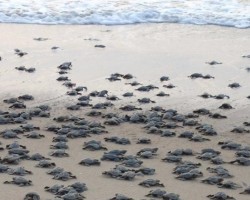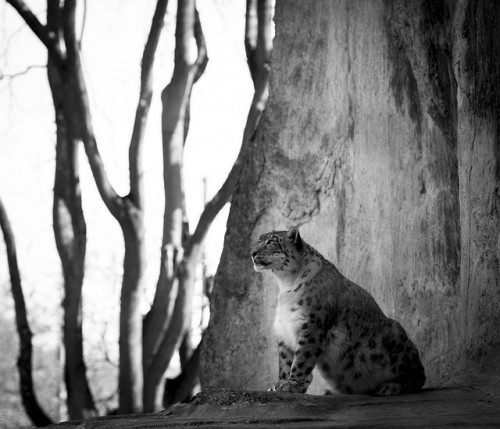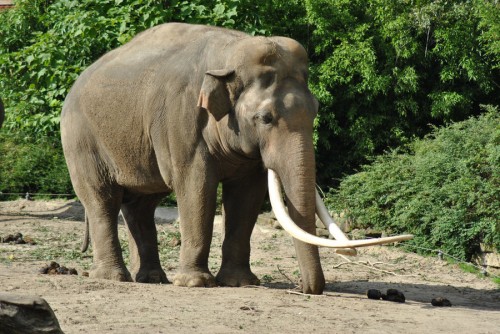Six lakh Olive Ridley turtle hatchlings made their way to the sea in Orissa’s Rushikulya Rookery. One of the few mass nesting site for the rare marine animals, the turtles were first seen coming to nest at the shores in March and hatching began in the first week of April.
According to forest officials, the process of mass hatching for this year is nearly complete. They add nesting of Olive Ridley turtles was low this year as compared to last year.
“Around 61,000 turtles had nested at this coast in March this year,” said Berhampur Divisional Forest Officer (DFO) S.S.Mishra.
In contrast, about three lakh turtles had nested at Rushikulya rookery in 2013 showing a sharp decline in the number of turtles that came to nest in the site.
It is known that Olive ridley turtles travel thousands of miles to lay eggs at exactly the same coastal beaches where they were born. Therefore, the low number of turtles arriving this year is a sign of either the population of mature adults reducing drastically or the turtle not finding conditions favourable enough at one of their most favourite nesting locations in the world.
Protection Squad
Forest officials and volunteers from the village left no stone upturned in ensuring a high survival rate of the turtle hatchlings this year.
The Olive Ridley eggs hatch under the sand at night and move towards the sea after coming out of the sand. However, they are exceptionally sensitive to light and in the presence of a bright source of light tend to move towards land instead of the sea.
To help the turtles find their way to the sea the forest department had requested all concerned authorities to switch off street lights at night during these few days of mass nesting. Most of them had acquiesced.
To ensure that baby turtles did not move towards land nets had been secured. The hatchlings that strayed and moved towards the land were captured in the net. They were collected by forest officials and volunteers and let out into the sea. The mass nesting at this coast started on March 10, which was early in comparison to previous years.
Once the hatchlings enter the sea they start swimming against the waves. During this process, they get imprinted with the earth’s geo-magnetic field, which helps them return to their ‘natal’ beach when it is time to breed. The growth to adulthood may take 15-20 years.
Orissa has been for centuries the preferred breeding ground for the Olive Ridleys. However, the threats to the survival of the turtles keep increasing each year.
In addition to predators, the species faces threats due to natural causes such as high waves, heavy rain, strong winds and erosion of nesting beaches and manmade factors like uncontrolled fishing and destructive developmental activities along coastal areas.
Rushikulya however has had a tradition of caring for these turtles, well before the scientific community took cognisance of them in this particular area. Fisher folk and youngsters have been taking special measures for over two decades to protect these turtles; at times even tearing their fishing nets to allow these turtles to feed. The locals almost revere these creatures as “Kurma”, an avatar of Lord Vishnu.
More Related Stories,
Poacher Nabbed with rare Soft Shelled Turtle
800 Olive Ridley Turtles Found Dead in South India
Turtle Nesting Sites Facing the Heat







2 thoughts on “Six lakh Olive Ridley Turtles Make their Way to the Sea”